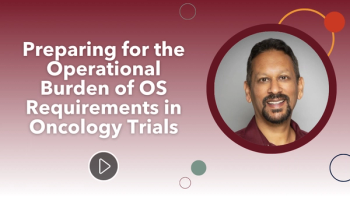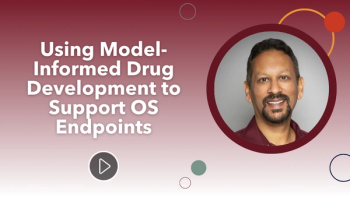
- Applied Clinical Trials-02-01-2015
- Volume 24
- Issue 2
Does the Adaptive Pathways Debate Go Far Enough?
While such discussions have advanced in Europe, two key omissions from the dialogue may limit any real changes.
Momentum is gathering in Europe's attempts to open up alternative pathways for innovative medicines to reach patients. At the end of 2014, the European Medicines Agency (EMA) presented a report on the pilot program it has been running since last March, which demonstrated growing industry interest in taking part, as well as some first concrete steps at exploring methodologies. EMA said that it had received 34 requests from companies to include ongoing medicine-development programs-a significant boost to the scheme. Because of the initial cautious response by companies to its invitation to propose experimental medicines still in the early stage of clinical development, agency officials felt constrained during the year to issue renewed invitations almost in the form of a plea.
Closer collaboration sought
The pilot is exploring the challenges that the agency's approach presents- and particularly how to achieve close collaboration among key constituencies: health technology assessment (HTA) bodies, organizations issuing clinical treatment guidelines, payers, and patient organizations. Support for product development is envisioned in the form of guidance to applicants from early dialogue and planning for strategic collection and use of real-world data. EMA says the pilot "provides a framework for open and informal dialogue between stakeholders, allowing them to explore different options in a 'safe harbor' environment and to consider detailed technical and scientific questions based on concrete examples." It is not concerned with evaluating data and results. It is simply testing out procedures and ways of formulating development plans.
Discussions abound
For some companies, guidance is already emerging-or, at least, steps have been taken in preparation to provide guidance. During December, the quality aspects of an advanced-therapy medicinal product were examined in a face-to-face exchange between the company, the agency, HTA bodies, and patients' representatives. The discussion involved members of the agency's committees for medicinal products for human use and for advanced therapies, and of its scientific advice and biologicals working parties. By mid-December, the agency had also held one-hour teleconferences with seven applicants, and six medicines have so far been selected to go forward to the second stage of in-depth face-to-face discussions. Meanwhile, a teleconference took place between EMA and HTA bodies from the UK, the Netherlands, Sweden, Italy, Austria, and Germany, to discuss how product-payment might be integrated into the pathway.
Pilot specifics
The drugs selected for the pilot so far come from companies that have been able to show how they aim to take advantage of the adaptive pathways approach-how they will argue the merits of the product with HTA bodies, how they will gradually expand indications or populations, and how they will incorporate real-world data into the post-authorization evaluation. But confident that it now has sufficient candidates, the EMA will tighten up its selection procedures starting from the end of February, and accept only "very well-developed proposals, which include scenarios requiring input from different stakeholders"-by which it means HTA bodies.
However, there are two crucial elements that are still missing from the pilot-and indeed from the European efforts to examine the merits of adaptive pathways. One is that, quite explicitly, the EMA pilot is focused uniquely on making the best use of existing regulatory tools. In other words, it is deliberately shying away from any reflections on what might be done with a shift in the European rules on medicines authorization. Politically, that is understandable. In a Europe that is laboring to find consensus even on how to dig itself out of recession, austerity, and deflation, or to respond to Russian aggression on its borders, or to cope with hundreds of thousands of desperate irregular migrants, the chances of effecting any significant change in the EU's rules on medicines are virtually zero in the foreseeable future. This year will mark the 50th anniversary of the first EU rules on authorization of pharmaceuticals-Directive 65/65/EEC, which set out the basic criteria of quality, safety, and efficacy. The EU is planning a commemoration later in 2015. But a commemoration of how the current set of rules got started is just about all that can be hoped for right now. It may not be another 50 years before there is any fundamental change to those rules-but it is certainly going to be more than 50 months.
The other missing element in the EMA approach is how medicines are going to be paid for in an adaptive pathways scenario. Admittedly, the agency is energetic in signing up HTA bodies to the pilot. But so far it has not yet managed to get any payers on board. And that really is the elephant in the room in these discussions. Or, perhaps, the elephant that is not in the room, and ought to be. As some industry executives have observed, there is little incentive for industry to speed up its development programs if at the end of the day it cannot get paid any quicker.
New support committee
Some relief may be provided in another EU initiative that is to take shape in the new year. The EU is establishing an expert group to be known as STAMP, derived as a clumsy acronym from its equally clumsy title of safe and timely access of medicines to patients. STAMP will report to the EU pharmaceutical committee-which consists of member states' senior officials for pharmaceuticals, and has broad responsibility for discussing legislation. Some members of this group are anxious to ensure that EMA does not run ahead too far with its pilot-health matters remain, after all, predominantly a national competence in the EU. STAMP has been given the formal mandate to identify ways of making more effective use of the EU's regulatory framework tools so as to "improve safe and timely access and availability of medicines for patients." The committee will explore the views of member states, and review their national experiences and initiatives in this area. Again, there are limitations to what the committee can and will do. It is going to be looking at the scope for flexibility in current provisions for accelerated assessment, conditional authorizations, authorization under exceptional circumstances on the basis of less complete data, or compassionate use and treatment on a "named-patient basis."
STAMP has no mandate to look beyond the current provisions and suggest reform. Also, since it is composed of representatives or nominees of health ministries, the group's members will, in most member states, have little influence over issues of pricing and reimbursement, because few European countries combine the role of health supervision and payment decisions for medicines.
The scene has been set for some vigorous debate in the coming months over how to speed good new medicines to patients by speeding up and adapting current procedures. But because the debate excludes the possibility of legislative change and has only tenuous links to the tougher world of health system economics and drug pricing, the outcome may prove to be more heat than light, or more talk than delivery.
Articles in this issue
about 10 years ago
AdTestalmost 11 years ago
Pressure Mounts for Central IRBsalmost 11 years ago
Terrorist Attacks Have No Impact on EuroMeeting, Says DIAalmost 11 years ago
Properly Assessing Quality in Clinical Trialsalmost 11 years ago
Exposing Patients to the Bigger Mobile and Digital Health Picturealmost 11 years ago
Key Strategies in Sustaining the Investigator Poolalmost 11 years ago
The Remote Patient-Centered Approach in Clinical Researchalmost 11 years ago
Risking it All? Going All in on RBM Adoptionalmost 11 years ago
Closing in on Opportunities to Simplify Protocol Designalmost 11 years ago
Integrated Clinical Research Systems: A Chance to ReinventNewsletter
Stay current in clinical research with Applied Clinical Trials, providing expert insights, regulatory updates, and practical strategies for successful clinical trial design and execution.






.png)



.png)



.png)
.png)
